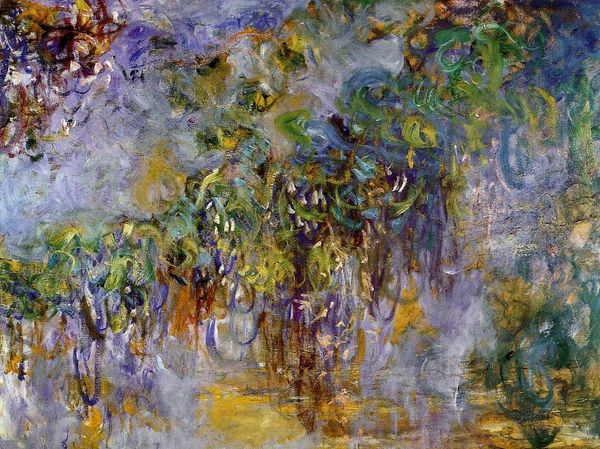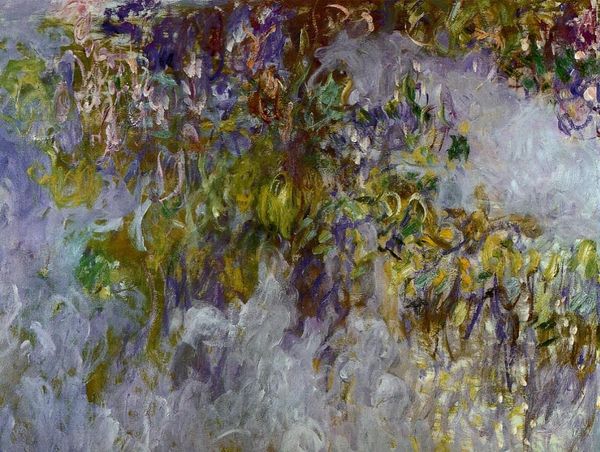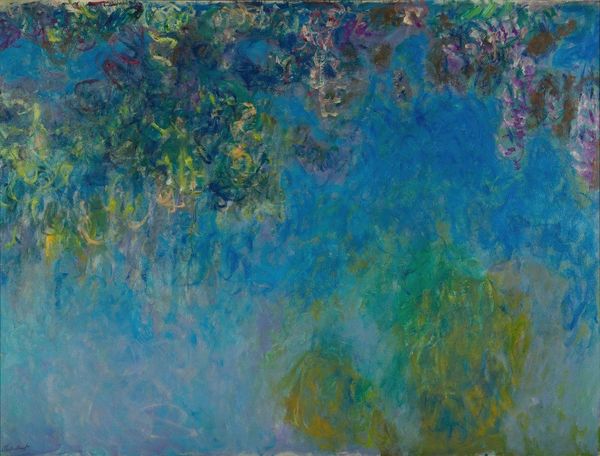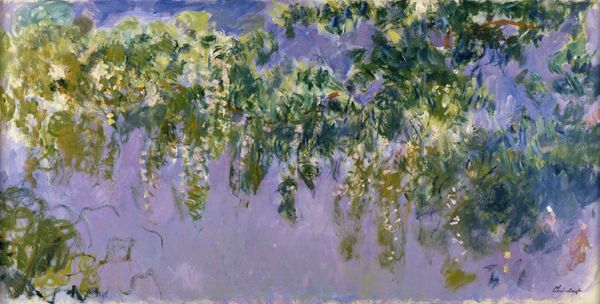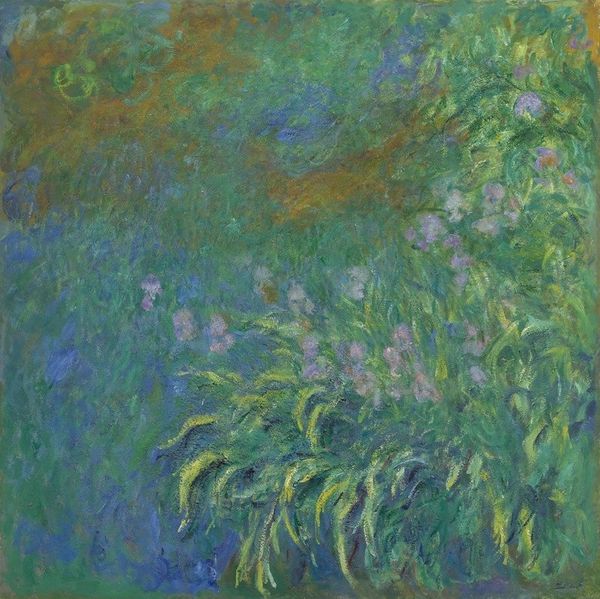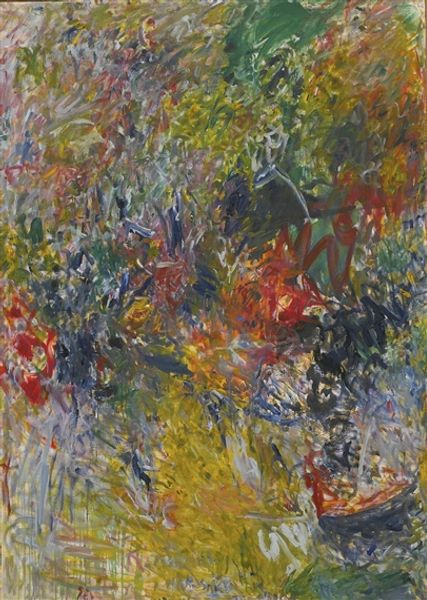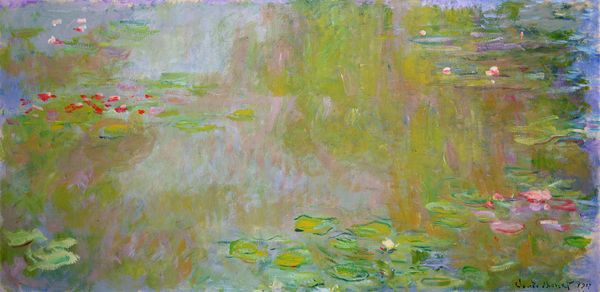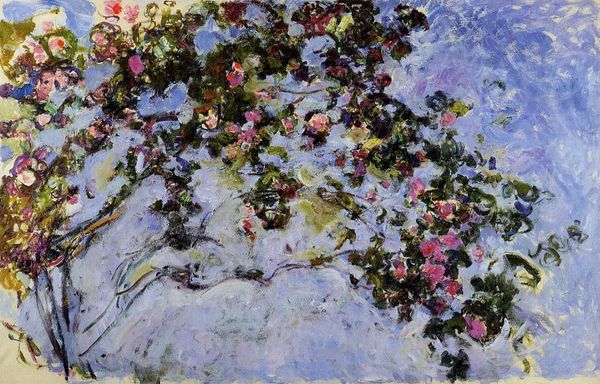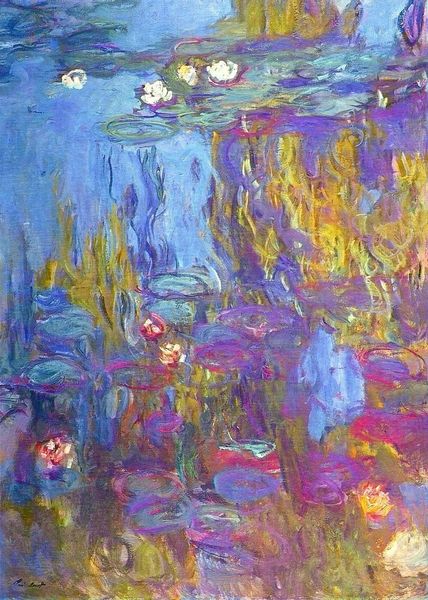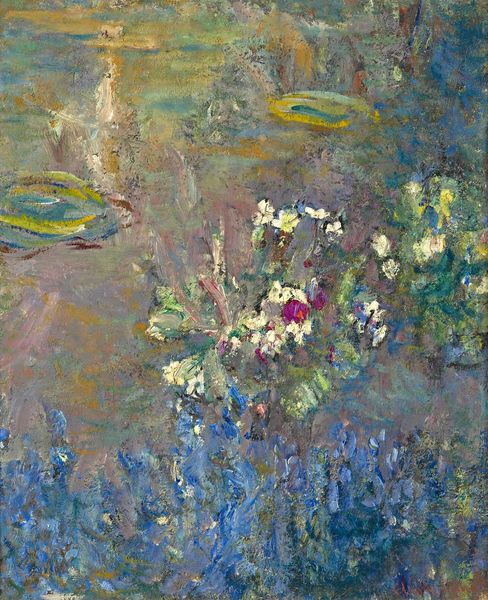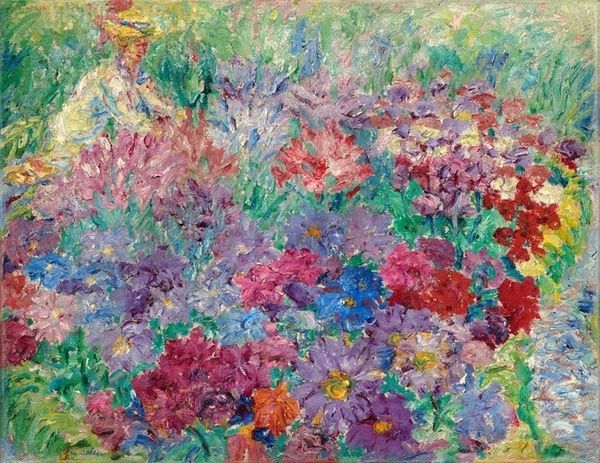
Copyright: Public domain
Curator: Up next we have Monet's "Wisteria," completed in 1920, a late-period work from the artist's Giverny garden. Editor: Immediately, I notice this atmospheric haziness. The blues and lavenders blend into something dreamlike, almost melancholic. It really pulls me in. Curator: Indeed. The impasto technique here is key; you can almost feel the physicality of the oil paint itself. Look closely, and you'll see how Monet built up layers upon layers, capturing not just the visual likeness of wisteria but its very texture and weight. This work was created during the interwar years, the social and political climates must have greatly influenced his output. Editor: Exactly, and wisteria itself has symbolic resonance. In some cultures, it represents long life and immortality, but there’s also this element of clinging, a possible metaphor for the clinging to hope amidst widespread trauma post-World War I. The labor involved must have been tremendous, and I wonder if this repetition offered him solace. Curator: That's fascinating. Thinking about the materiality, oil paint became increasingly accessible during Monet's lifetime, transforming art production from laborious handcrafted endeavors to industrial output. These mass-produced paints helped in facilitating the new Impressionistic, quicker method of painting. And speaking of repetition, Monet painted the same waterlilies repeatedly across time to perfect the impasto layering on them! Editor: Absolutely. The wisteria seems to represent an exploration of nature and memory, acting as a vessel of personal grief after his wife's death. Furthermore, the focus on light and color allows Monet to reflect a wider consideration of visual impairment from his increasing loss of vision at this stage in his life, questioning vision and representation itself. It serves as a potent symbol that connects the artist’s experiences with larger narratives of grief, memory, and societal impact. Curator: It’s wonderful to see how a study of process can open up so many questions of personal experience. Editor: Yes, and thinking about the intersections between art history and our contemporary moment really brings a painting like this to life.
Comments
No comments
Be the first to comment and join the conversation on the ultimate creative platform.
